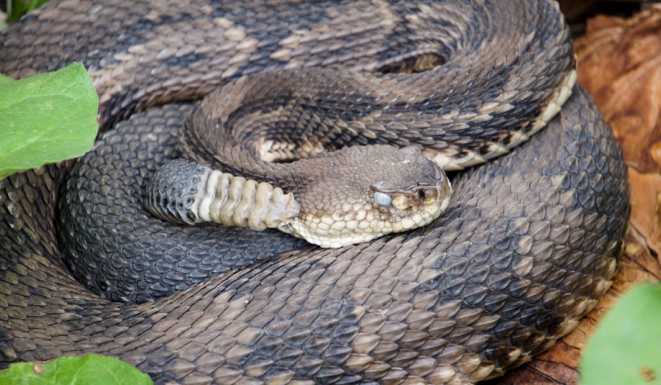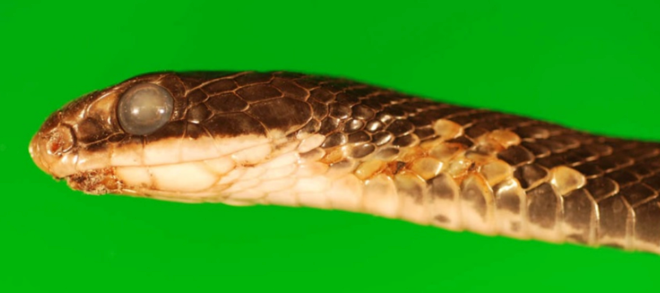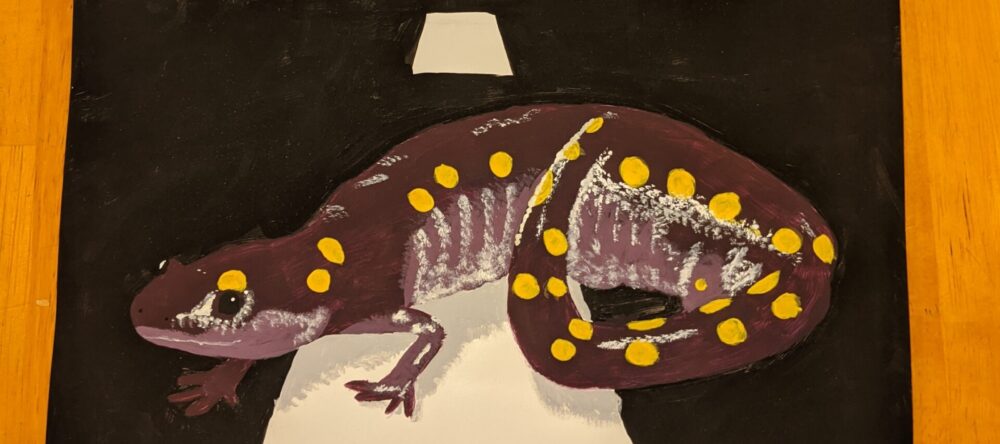By Lauren Berkley
It’s spring time in Vermont. Bright green buds are sprouting and the snow is finally melting. Black bears are waking up, songbirds are returning from their wintering grounds, and spring peepers are filling the evenings with their songs. But some have not fared the winter so well. While they took shelter from the cold, a disease quietly infected snakes throughout the country. They are now emerging from their dens in poor condition, and many will not survive.
Since 2006, there have outbreaks of a severe skin infection in snakes known as Snake Fungal Disease (SFD). The disease causes lesions on infected individuals, often leading to secondary infections or death. SFD has already led to a decline in timber rattlesnake (Crotalus horridus) populations in the northeastern U.S. I interviewed Dr. Jeffrey Lorch from the National Wildlife Health Center about his paper “Snake fungal disease: an emerging threat to wild snakes” to gain a better understanding of the disease.
Where It All Began
SFD is caused by a fungus called Ophidiomyces ophiodiicola, which has been present in the environment for over a century. So why is it affecting snakes now? Climate change may very well be the answer.
“This pathogen has been around for a long time,” Dr. Lorch said, “but changes in the environment can facilitate the disease becoming more common or more severe.”
The Real Problems
Unlike mammals, amphibians and reptiles are ectotherms, so they rely on the environment to regulate their temperature. As a result, they are more susceptible to climate change. For example, reptiles can’t have “fevers” to help them fight off disease like mammals can. They have to relocate themselves to warmer areas to accomplish a similar effect. “Climate change has led to cooler and wetter springs in the northeastern United States, which is not ideal for snakes trying to fight off SFD,” Dr. Lorch explained.

Snakes often develop SFD during hibernation, likely due to increased transmission from groups of snakes concentrated in overwintering areas. This can lead to snakes exhibiting “risky” behavior, such as leaving their dens too early in search of sunlight to induce a fever.
Snakes are also having a hard time finding the microclimates they need due to fire suppression, development, and habitat fragmentation. If you combine the effects of all these factors with the effects of disease, the future of snake populations may be quite bleak.
To make matters worse, it’s hard to pin-point what causes disease. As Dr. Lorch likes to say, “reptiles decompose while they’re still alive.” On an infected reptile, you will find many pathogens. It can be challenging to differentiate the primary pathogen (the pathogen that caused the disease) from the pathogens that came after infection.
To find the pathogen that causes SFD, Dr. Lorch and fellow researchers had to act like detectives at a murder mystery party, searching through the pathogens present on snakes for the true criminal. Eventually, they found that Ophidiomyces ophiodiicola is indeed the SFD-causing agent when red corn snakes (Pantherophis guttatus) infected with the fungus developed SFD.

No Hope for a Cure
Unfortunately, a cure is not practical, which is true for most wildlife diseases. “Once a pathogen is established, it is almost impossible to get rid of it,” said Dr. Lorch. Eradication requires that you capture and treat every single infected animal. This is not realistic for most species, but especially not for snakes which are typically elusive.
SFD can persist in the environment, so eradication would also require treating entire ecosystems. Dr. Lorch emphasized that “when it comes to fungal diseases, exposure doesn’t result in lifelong immunity.” If the underlying problem is not addressed, animals will just become re-infected. It is more worthwhile to protect suitable habitats, combat climate change, and prevent diseases from becoming an issue to begin with.
So what?
If you don’t like snakes, or perhaps even fear them, you should know that snakes benefit humans more than you might think. Snakes prey on animals that destroy agricultural crops and transmit disease. Rattlesnakes in the northeastern U.S. may even impact the populations of rodents that serve as reservoirs of Lyme disease. Snakes are also an important food source for many species of vertebrates, such as hawks and owls.
The Bigger Picture
Disease is one of the greatest threats to biodiversity around the globe. “Other environmental threats,” said Dr. Lorch, “such as habitat loss and overhunting, happen relatively gradually. Disease can be difficult to predict, and cause damage rapidly.”
As we are all now keenly aware, this rings true for human diseases as well. The COVID-19 pandemic is a zoonotic disease, which is a disease that can jump between animals and humans. While reptiles are rarely vectors of
zoonotic diseases, other wildlife such as bats and rodents certainly are. It has perhaps never been more clear that we must take action against these threats.
Disease may be unpredictable, but that doesn’t mean there is nothing we can do. The key to combating it is education and prevention. “In secondary school, many of us learned about the destruction of the ozone and the Amazon rainforest, but how many of us learned about invasive species? How many of us learned about disease ecology?” said Dr. Lorch.
We need to create curriculums based on comprehensive environmental health. We must instill the profound value of wildlife and ecosystem services in young people. As Jane Goodall once said, “There is not much point in doing this conservation work…if we are not at the same time devoting huge amounts of energy to raising young people to be better stewards than we have been.”
